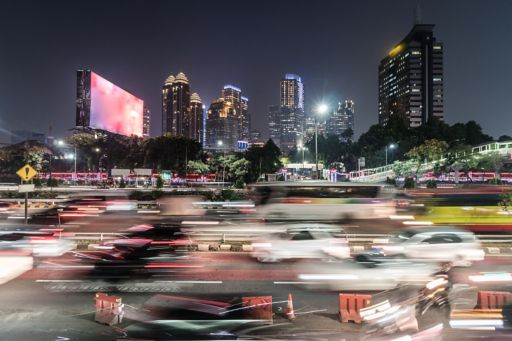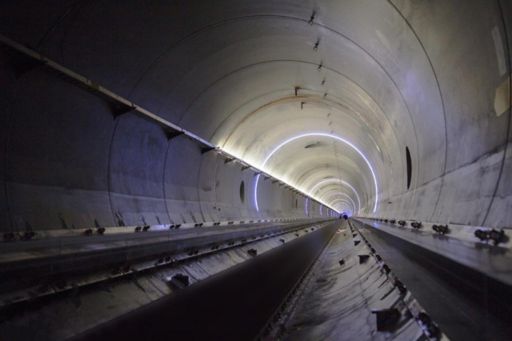Contributors
Paul Kent, Global Infrastructure Head of Smart Cities, KPMG International
Setiaji, Head of ICT Agency, West Java Provincial Government
Dr. Limin Hee, Director of Research, Centre for Livable Cities in Singapore
Smart cities are starting to flourish in the emerging markets
As smart cities start to flourish in the emerging markets, many governments are exploring how they can extend their existing investments to create smarter regions and countries. Based on the experience of Singapore and West Java, the key is to focus on customer-centricity.
With little 'legacy' infrastructure to hold them back, many of the largest emerging market cities have been making great progress on their Smart Cities agendas. In fact, across the ASEAN region alone, there are at least 26 smart cities in development, including megacities like Jakarta, Bangkok and Manila. And while all emerging market smart cities may be at different stages of development today, the vast majority are seeing significant value start to flow from their investments.
Now, the agenda has started to shift. Rather than just focusing on enabling citizens already living in city centers, a growing number of governments are exploring how they can take digitization and smart infrastructure to a much wider population.
As a city-state, Singapore has always taken a broader view of their smart city investments. Others, like the Province of West Java in Indonesia, are now starting to also think in much broader terms about their technology enablement.
“Our focus has shifted towards ensuring that our IT investments are inclusive to all of our citizens,” noted Setiaji Setiaji, Head of the ICT Department with the Government of West Java and former Head of Jakarta's Smart Cities program. “The majority of West Java's population lives in rural areas and our job is to provide them with the technologies and services they need to grow in their villages.”
Investing into new tech
For both West Java and Singapore, part of the plan involves developing and deploying new technologies that leverage existing infrastructure to meet the needs of the wider population.
In Singapore, for example, the government is converting public lamp posts into an interconnected network of wireless sensors. “This will allow agencies to collect and analyze valuable data at a very granular level in order to gain better insight into priorities for urban development,” noted Dr. Limin Hee, Director of Research with the Center for Livable Cities in Singapore. The sensors would provide details on things like traffic volumes, air quality and street lighting.
With large rural populations and challenging physical environments, the focus in West Java is on deploying technologies that can drive wider participation. “Of 5,312 villages in West Java, over 700 of them do not have Internet access, even through 3G or 4G networks,” pointed out Setiaji. “Our first priority is to provide the technology these villages need in order to connect. Or, in some cases, technologies that unlock services without the need for continuous internet access.”
For example, the West Java government is currently developing a device that would contain a deep library of information that can be updated online but stored offline. This will be used to help educate school children, communicate important information or to help train adults to use new technologies.
The next stage of our development involves establishing strategic partnerships with companies to create smart districts where we can test new technologies and gain experience.
Partnering for public good
Both Dr. Hee and Mr. Setiaji agree that partnerships are critical to delivering on the Smart agenda. “We recognize that government can't do everything on its own; it takes partnerships and collaboration,” added Mr. Setiaji. “That is why we are collaborating with a wide range of parties, from academia, businesses, developers, startups and the community through to other levels of government — particularly the central government and our city government bodies.”
Singapore's government is also keenly focused on collaboration and partnership. “Our plans for a Smart Nation aren't just about how government can provide smart infrastructure, but also about how businesses and citizens can take advantage of that infrastructure to become more engaged and live better lives,” noted Dr. Hee.
Having already achieved a fairly high level of smart city sophistication, Singapore's focus has shifted to creating regional incubators. “The next stage of our development involves establishing strategic partnerships with companies to create smart districts where we can test new technologies and gain experience,” she added.
In the Punggol Digital District, one of the three smart districts being developed in Singapore, the government has worked with academics, businesses and government agencies to create a new digital platform that can integrate a range of smart city solutions — including district cooling systems, pneumatic waste conveyance systems, car park management systems and so on — to achieve a more centralized approach to management and operations.
Open up the data
As many governments around the world are starting to recognize, government data needs to be ‘open’ and integrated in order to drive innovation and enhance the results of collaboration. “We aren’t building a lot of apps ourselves; we are just opening up our data — both our manual data and our systems data — to allow startups to build applications that help solve some of the big problems we have in West Java,” noted Setiaji.
“West Java as a provincial government is actively seeking to enable city and regency level governments to integrate their data. The provincial government is constructing 13 command centers in the city and regency levels between 2019 to 2020 and will integrate them to the command center in the provincial level.”
Dr. Hee agrees. “Creating a successful and sustainable Smart Nation isn’t about delivering a massive amount of infrastructure. We also need to encourage the innovation that we want to see. Opening up our data allows the private sector and academics to take a leading role in helping make our nation more livable by developing technologies and apps that deliver on our objectives,” she added.
Singapore is also taking steps to better integrate data across government departments and agencies to deliver a more seamless experience for citizens when dealing with the government. For example, the government recently launched the OneService app that allows citizens to report issues such as cracked pavements or malfunctioning lights.
“Citizens don’t really care which department is responsible as long as the issue gets fixed,” added Dr. Hee. The platform even provides citizens with real-time updates on how their report is being managed and (hopefully) resolved.
Talking talent
Building a smart city or region is one thing; having the right skills to operate, maintain and improve the new services and models is another thing altogether. And it is a major focus of smart cities seeking to sustain their technology advances.
“On the one hand, we are helping people upgrade their skills so that they can reap the full rewards of the digital economy. But, at the same time, students are learning key skills like coding,” noted Dr. Hee. “We aren't just talking about systematic design, we are actually stepping up our educational programs to embed it into our way of thinking.”
West Java is also investing into new skills and capability development. “We need to bring up the level of professionalism and training in our schools, including vocational schools, to prepare the next generation of students to take advantage of Industry 4.0 and everything that it brings,” added Setiaji. He also hinted at the breakthrough West Java is orchestrating with the formation of the West Java Digital Service (JDS) to attract digitally-focused, young talents, comprising of software programmers, developers, data and business analysts, product managers, and designers to help transform the West Java into a digital province.
Leave nobody behind
While new technologies, talent, collaboration and open data are all key to expanding smart city capabilities out to a broader audience, both Dr. Hee and Mr. Setiaji agree that the most important thing is to focus on what is best for citizens.
For us, the focus is on ensuring that we are creating a more inclusive society where people outside of the cities have equal access to services they need,” added Setiaji. With Digital Village Programme, his government has deployed a number of citizen-centric apps and technologies that respond to the actual needs of rural citizens. One app, for example, helps fish farmers to monitor the health and activity of their stock. Another app helps small-scale agricultural farmers improve their crops through real-time planting and irrigation support. West Java is also deploying a one-stop public service super apps, called Sapawarga (Greet the People), to over 53,000 community leaders throughout the province to help democratize public service delivery.
In Singapore, investments in smart urban technologies has always been about making a difference in people’s lives. “Smart city investment can’t just be about cost savings and efficiency. You need to be focused on making an impact in the day-to-day lives of the people you serve,” noted Dr. Hee. “It’s all about knowing your citizens better and then using that information to deliver better services. Most of all, it’s about ensuring that Smart Cities remain inclusive and that nobody gets left behind,” she added.
Singapore is also taking steps to better integrate data across government departments and agencies to deliver a more seamless experience for citizens when dealing with the government.








